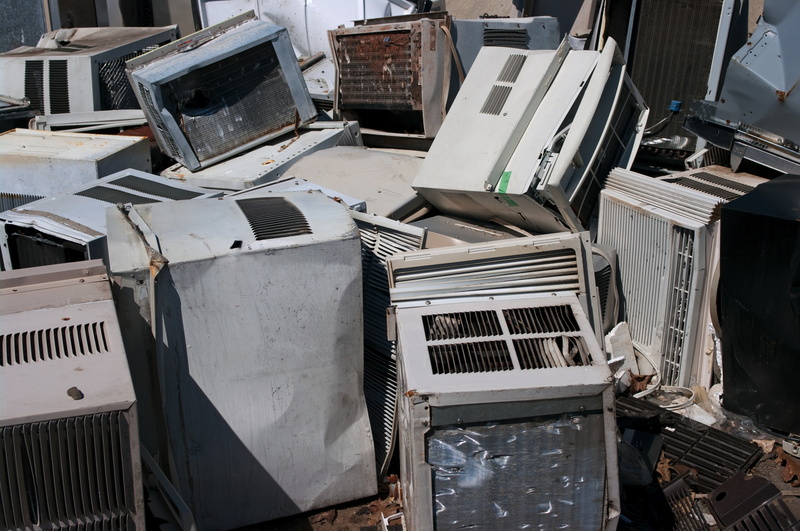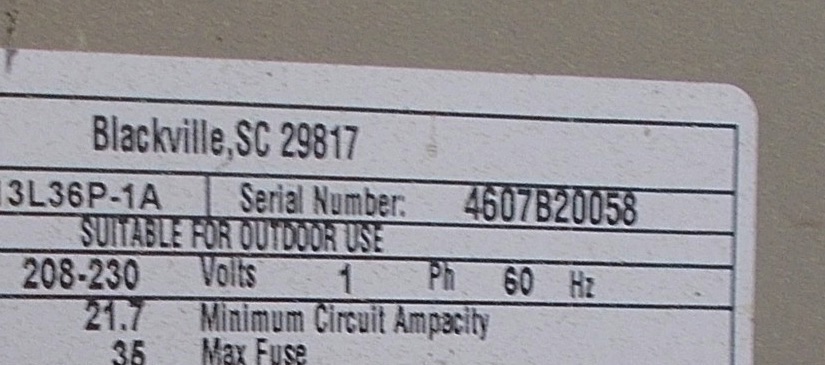What size in tons is my Armstrong Air heat pump or air conditioner?
Sunday, May 17, 2020
If the trane serial number is a 9-digit combination of letters and numbers that starts with a number, then the first number is the year. Trane heating and air conditioning company again made changes in year 2010. The first two digits of trane serial number lookup age are the year. Model numbers for Armstrong Air products are found on the outside of the unit, usually in a lower rear corner. Either way, Armstrong Air has an extensive collection of literature on every piece of equipment we offer, to help you learn more.
You can determine the “nominal” condenser tonnage of your HVAC system by examining the model number on the data plate at the side of the condenser (outdoor unit). Just like the nominal size of lumber or an air conditioning filter, the exact cooling capacity may be a little more or less than the nominal rating, but it’s close.
For Armstrong Air, you should look at the end of the model number. It will be a number divisible by 6 or 12, and represents the nominal BTU of the system in thousands. A ton of air conditioning equals 12,000 BTU so, for the model number 4SHP16LS136P, 36 divided by 12 equals 3 tons. Older models may have a shorter number, like CJK24S-2C.
- SEARCH BY MODEL NUMBER PARTS FINDER. Air Conditioning Parts All Air Conditioning Parts A/C Cabinet Parts Crankcase Heaters Accessories Install Accessories Whips / Disconnects Condenser Coils AC Covers Compressors.
- Armstrong Air Conditioning Inc., 421 Monroe St., Bellevue, Model # Serial # Installation Date INSTALLED BY: Dealer PLEASE READ AND SAVE THESE INSTRUCTIONS To further assist in the installation of the Series CS-10, Armstrong offers an optional set of installation legs.
Here’s a rundown of the range you will encounter: 18 = 1.5 tons, 24 = 2 tons, 30 - 2.5 tons, 36 = 3 tons, 42 = 3.5 tons, 48 = 4 tons, and 60 = 5 tons.
If you are unsure whether you have found the right two numbers, you can double-check it by looking for the “RLA” rating on the data plate. RLA is an acronym for Rated Load Amperage, and is what the maximum amperage should be when the condenser up and running. If you divide the RLA by 6 for older units and 5 or 6 for newer units, you should get a number that approximates (not exactly) the tonnage of the system. Make sure you use RLA and not LRA, Locked Rotor Amperage, which is the surge of amps necessary to overcome inertia and start the system. It averages around five times the RLA.
To determine the age of a Armstrong Air system, go to our blog post How do I tell the age of an Armstrong Air furnace or air conditioner from the serial number?For the age of another brand or manufacturer, go to our blog post How do I determine the age of my air conditioner?
And to figure out what all the other numbers listed on the condenser data plate mean, go to our blog post How do I understand the air conditioner or heat pump condenser label (data plate)?
• • • • • • • • • • • • • • • • • • • • • • • • • • • • • • • • • • •
To learn more about heating and air conditioning systems, see these other blog posts:
• How can I find out the SEER of my air conditioner?
• My air conditioner won't turn on. What's wrong?
• How can I find out the size of my air conditioner?
• How can I find out the age of my air conditioner or furnace?
• How can I tell whether the condenser (outdoor unit) is an air conditioner or heat pump?
• Where is the air filter for my central air conditioner and furnace? I can’t find it?
• Does an old air conditioner use more electricity as it ages?
• How did homes stay cool in Florida before air conditioning?
• What is wrong with an air conditioner when the air flow out of the vents is low?
• Why has the thermostat screen gone blank?
• Why does it take so long to cool a house when an air conditioner has been off for a while?
• Why is my air conditioner not cooling enough?
• What are the most common problems with wall/window air conditioners?
• Will closing doors reduce my heating and cooling costs?
Visit our HEATING AND AIR CONDITIONING page for other related blog posts on this subject, or go to the INDEX for a complete listing of all our articles.
How To Look At A House
McGarry and Madsen's home inspection blog for buyers of
site-built, mobile/manfuactured and modular homes
Click Below
for Links
to Collections
of Blog Posts
by Subject
Top 5 results given instantly.
Click on magnifying glass

for all search results.
How do I tell the age of a Magic Chef or Armstrong furnace or air conditioner from the serial number?
Sunday, August 19, 2018
Although the Magic Chef nameplate was only in production during the 1980s and 90s, many furnaces were installed around the Gainesville area, especially in apartment/condos and mobile homes. The 8th digit of the serial number, which will be a letter (and typically the next to last digit) denotes the year of manufacture:
A = 1980 K = 1989
B = 1981 L = 1990
C = 1982 M = 1991
D = 1983 N = 1992
E = 1984
F = 1985
G = 1986
H = 1987
J = 1988
An example, shown below, is: A 10322EDB
The underlined letter indicates it was manufactured in 1983.
Some units will have the “Armstrong - Columbus, Ohio” nameplate on them, but follow the same serial number pattern.
To find out the age of another brand of air conditioner or heat pump, go to How do I determine the age of my air conditioner?, which has a listing of all major manufacturers and links to instructions for decoding their serial numbers.
To find the age of other home components, go to How can I find out the age of a roof? and How do I determine the age of an electrical panel? and How do I determine the age of my water heater? For life expectancies, visit What is the average life expectancy of the components of a house?
• • • • • • • • • • • • • • • • • • • • • • • • • • • • • • •
To learn more about heating and air conditioning systems, see these other blog posts:
Armstrong Air Conditioning Serial Numbers Diagram
• How can I find out the SEER of my air conditioner?
• My air conditioner won't turn on. What's wrong?
• How can I find out the size of my air conditioner?
• How can I tell whether the condenser (outdoor unit) is an air conditioner or heat pump?
• Where is the air filter for my central air conditioner and furnace? I can’t find it?

• Does an old air conditioner use more electricity as it ages?
• How did homes stay cool in Florida before air conditioning?
• What is wrong with an air conditioner when the air flow out of the vents is low?
• Why has the thermostat screen gone blank?
• Why does it take so long to cool a house when an air conditioner has been off for a while?
• Why is my air conditioner not cooling enough?

• What are the most common problems with wall/window air conditioners?
• Will closing doors reduce my heating and cooling costs?
Visit our HEATING AND AIR CONDITIONINGpage for other related blog posts on this subject, or go to theINDEXfor a complete listing of all our articles.
How To Look At A House
McGarry and Madsen's home inspection blog for buyers of
Armstrong Air Conditioning Serial Numbers Chart
site-built, mobile/manfuactured and modular homes
Click Below
for Links
to Collections
of Blog Posts
by Subject
Top 5 results given instantly.
Click on magnifying glass
for all search results.